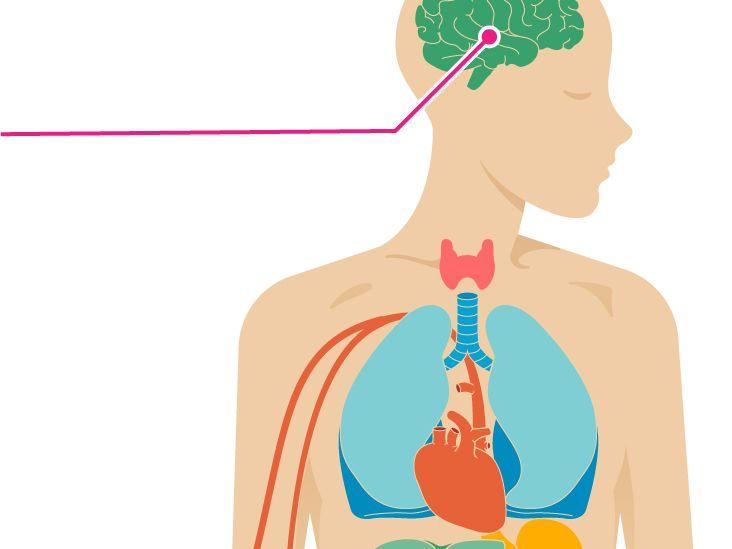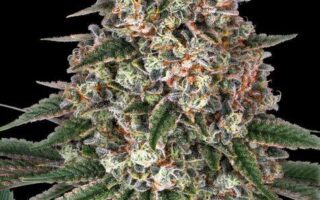As the debate surrounding the legalization and use of marijuana continues to evolve, an increasing number of people find themselves curious about the substance’s effects on the human body. From its ancient roots in traditional medicine to its modern-day role in wellness and recreation, cannabis has sparked interest—and controversy—around its myriad impacts. While some praise its potential benefits, others express concerns about its risks. This article aims to demystify the physiological effects of marijuana, exploring how it interacts with our bodies, influences our minds, and shapes our experiences in both subtle and profound ways. Join us as we delve into the science behind this complex plant and uncover the truths that lie within the haze.
Table of Contents
- Exploring the Physiological Responses to Cannabis Consumption
- Cognitive Repercussions: How Marijuana Influences Mental Function
- Long-Term Health Implications: Weighing the Benefits and Risks
- Navigating Responsible Use: Tips for Mindful Consumption
- Q&A
- The Conclusion
Exploring the Physiological Responses to Cannabis Consumption
The act of consuming cannabis triggers a fascinating chain of physiological responses within the human body. When cannabinoids such as THC and CBD are introduced into the system, they bind to cannabinoid receptors primarily located in the brain and central nervous system. This interaction can lead to various effects, influencing physiological aspects that range from mood alterations to changes in sensory perception. These responses are intricately linked to the endocannabinoid system, responsible for maintaining balance in several bodily functions.
- Altered Sensory Perception: Enhanced tactile, auditory, and visual sensations.
- Increased Heart Rate: A potential spike in heart rate, which some users might find alarming.
- Appetite Stimulation: The infamous “munchies” leading to increased food cravings.
- Relaxation and Euphoria: Inducing feelings of tranquility and elation.
Furthermore, cannabis consumption can lead to notable neurochemical changes, primarily through the release of neurotransmitters like dopamine and serotonin. This wave of restorative effects can impact various physiological functions including sleep patterns, pain perception, and even immune response. Understanding these changes can enlighten users about the potential benefits and drawbacks associated with cannabis use.
| Physiological Effect | Description |
|---|---|
| Increased Appetite | A surge in hunger signals post-consumption. |
| Altered Sleep Patterns | May lead to better sleep for some, but disrupt sleep for others. |
| Respiratory Changes | Can cause bronchodilation, particularly with smoking. |
| Reduced Inflammation | Potential relief for inflammatory conditions. |
Cognitive Repercussions: How Marijuana Influences Mental Function
Marijuana’s impact on cognitive function can be a complex topic, often varying based on factors such as dosage, frequency of use, and the individual’s unique physiology. Studies suggest that the psychoactive component of marijuana, delta-9-tetrahydrocannabinol (THC), has the potential to alter various aspects of mental processing. Users might experience short-term effects such as:
- Impaired memory: Difficulty in retaining new information.
- Altered judgment: An increased tendency to engage in riskier behavior.
- Attention deficits: Trouble focusing on tasks at hand.
Long-term use raises additional concerns, as chronic exposure to THC may lead to persistent changes in brain function. Neuroimaging studies illustrate modifications in brain structure and connectivity, particularly in areas responsible for decision-making and emotional regulation. The table below shows some notable cognitive effects related to marijuana use:
| Effect | Duration | Potential Recovery |
|---|---|---|
| Memory Loss | Hours to days | Variable |
| Concentration Issues | Hours | Typically full recovery |
| Motivation Decline | Weeks to months | Possible with cessation |
Long-Term Health Implications: Weighing the Benefits and Risks
The long-term implications of marijuana consumption are a subject of considerable debate among health professionals, patients, and researchers. While many users cite benefits such as reduced anxiety, chronic pain relief, and improved sleep quality, potential risks cannot be overlooked. Regular marijuana use has been linked to:
- Mental health concerns: Increased risk of anxiety, depression, and psychosis, especially in individuals with a predisposed genetic risk.
- Cognitive decline: Long-term use may impact memory, attention, and learning abilities, particularly in adolescents whose brains are still developing.
- Respiratory issues: Smoke from marijuana, similar to tobacco, can irritate the lungs and lead to chronic bronchitis symptoms.
On the other hand, cannabis has demonstrated potential therapeutic benefits, leading to its increased acceptance in various medical communities. Studies show that certain compounds in marijuana, such as CBD, may offer:
- Anti-inflammatory properties, helping conditions like arthritis and Crohn’s disease.
- Antioxidant effects, which may contribute to neuroprotection and overall cellular health.
- Pain management alternatives to opioids, aligning with efforts to combat the opioid crisis.
Additionally, understanding the balance between benefits and risks is essential for anyone considering long-term marijuana use, emphasizing the necessity of informed choices guided by healthcare professionals.
Navigating Responsible Use: Tips for Mindful Consumption
When consuming marijuana, being aware of its impact on the body can foster a more responsible experience. Understanding how it interacts with your physiology is crucial. Recognize that everyone’s body reacts differently based on factors like metabolism, tolerance, and individual health conditions. Here are some tips to promote mindful consumption:
- Start Low, Go Slow: Begin with a low dose to gauge your body’s reaction.
- Stay Hydrated: Drinking water can help alleviate any possible discomfort associated with dryness.
- Choose the Right Environment: Use marijuana in a comfortable and safe space to fully enjoy and assess its effects.
- Be Educated: Know the different strains, potencies, and consumption methods to make informed choices.
Monitoring your consumption not only enhances your experience but helps mitigate adverse effects. It’s beneficial to keep a record of how different strains and dosages affect you. Consider the following table to track your experiences:
| Strain | Dosage | Effects | Notes |
|---|---|---|---|
| Indica | 5mg | Relaxation, Sleepiness | Perfect before bedtime |
| Sativa | 10mg | Euphoria, Increased Focus | Good for social settings |
| Hybrid | 7mg | Balanced Effects | Versatile choice for various activities |
Q&A
Q&A: Understanding the Effects of Marijuana on the Body
Q1: What happens to the body when marijuana is consumed?
A1: When marijuana is consumed, its active compounds, particularly THC (tetrahydrocannabinol), bind to cannabinoid receptors in the brain and other parts of the body. This interaction can lead to various physical and psychological effects, including altered mood, euphoria, and relaxation. Simultaneously, it may impact functions such as memory, coordination, and judgment.
Q2: Are there immediate effects I should be aware of?
A2: Yes, immediate effects can vary widely but commonly include increased heart rate, dry mouth, red eyes, and altered sensory perception. Some users report feelings of happiness and relaxation, while others might experience anxiety or paranoia, highlighting the subjective nature of these effects.
Q3: How does marijuana affect mental health?
A3: The relationship between marijuana and mental health is complex. For some, it may provide relief from anxiety or depression, while for others, particularly those predisposed to mental health disorders, it could exacerbate symptoms. Regular heavy use has been linked to potential long-term changes in brain structure and function, underscoring the need for cautious consumption, especially for young users.
Q4: What are the long-term effects of marijuana on the body?
A4: Long-term use of marijuana may lead to various issues, such as respiratory problems if smoked, reduced cognitive function, and potential dependency in some individuals. Research indicates that prolonged use can affect motivation, often referred to as “amotivational syndrome,” though more research is needed to fully understand these effects.
Q5: Can marijuana impact physical health?
A5: Yes, marijuana can influence physical health in multiple ways. Smoking marijuana may irritate the lungs and lead to chronic bronchitis-like symptoms. Conversely, some studies suggest potential therapeutic benefits, such as pain relief and reduced inflammation, particularly in conditions like multiple sclerosis and arthritis. However, these benefits must be weighed against risks.
Q6: Is there any evidence that marijuana has therapeutic effects?
A6: Indeed, there is growing evidence that certain compounds in marijuana, particularly CBD (cannabidiol), may have therapeutic effects. CBD is known for its potential anti-inflammatory, anti-anxiety, and anti-seizure properties, and some patients have found relief from chronic pain, epilepsy, and nausea associated with chemotherapy through medical marijuana use.
Q7: Are there risks associated with using marijuana in tandem with other substances?
A7: Using marijuana alongside other substances, especially alcohol or other drugs, can heighten the effects of each. This can lead to increased impairment, riskier behaviors, and greater chances of negative health outcomes. It’s crucial to approach combined substance use with caution.
Q8: What should someone consider before using marijuana?
A8: Before using marijuana, individuals should consider their health history, potential interactions with other medications, the legal status in their area, and their reasons for use. Consulting with a healthcare provider can help address any concerns and provide guidance tailored to personal health circumstances.
Q9: Is there a difference between medical and recreational marijuana in terms of effects?
A9: While both forms of marijuana contain similar compounds, medical marijuana is often used under a doctor’s supervision for specific conditions and may be tailored for therapeutic effects. Recreational use typically seeks psychoactive effects and can vary widely from user to user, sometimes leading to uncertainty regarding dosage and health impacts.
Q10: What is the takeaway regarding marijuana’s effects on the body?
A10: The effects of marijuana on the body are multifaceted, encompassing both potential benefits and risks. Individual responses vary, making it essential for users to stay informed and mindful of their consumption patterns. Whether for medical or recreational purposes, understanding these dynamics can lead to more responsible use.
The Conclusion
As we draw the curtain on our exploration of the multifaceted effects of marijuana on the body, it’s clear that this complex plant weaves an intricate tapestry of both benefits and challenges. From its potential therapeutic applications to the risks it may pose, understanding marijuana’s impact requires a careful balance of curiosity and caution. As society continues to navigate this evolving landscape, individuals must equip themselves with knowledge, making informed choices that resonate with their own health and wellness journeys. The dialogue around marijuana is far from over, and as research unfolds, we can anticipate a deeper understanding of how this age-old herb influences our modern lives. In the ever-evolving story of marijuana, one thing remains certain: the conversation is just beginning.



